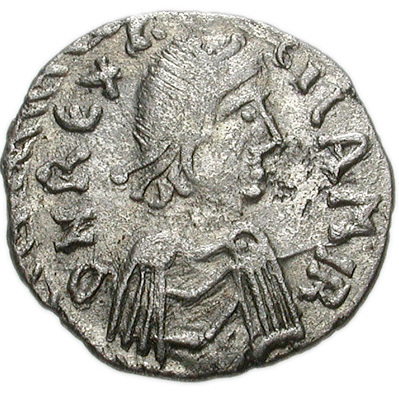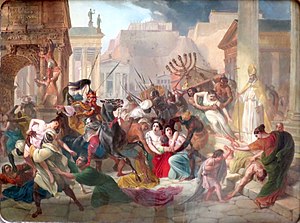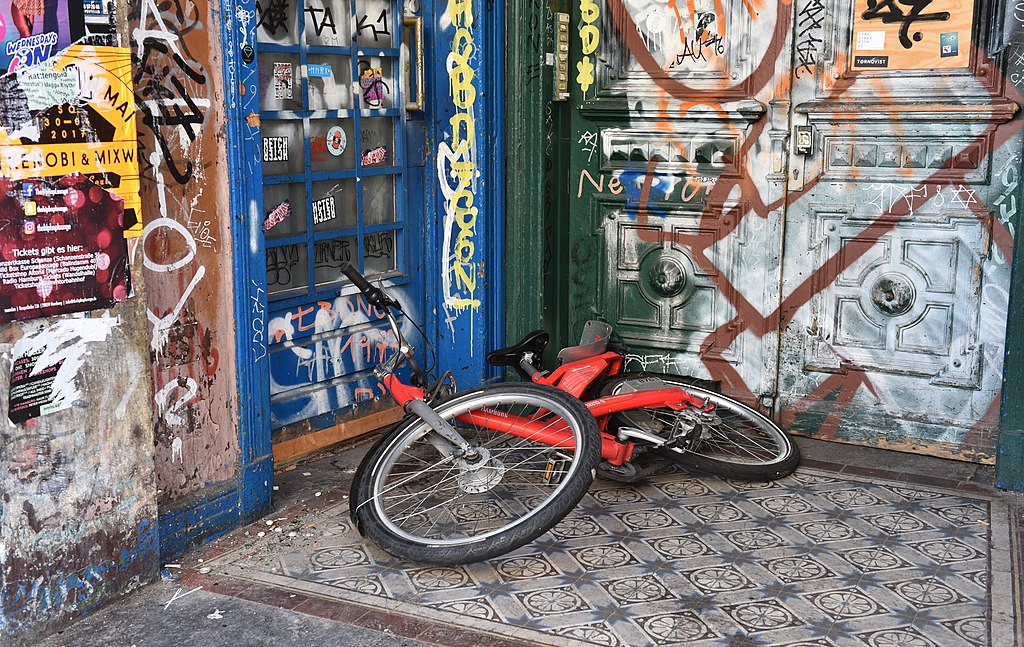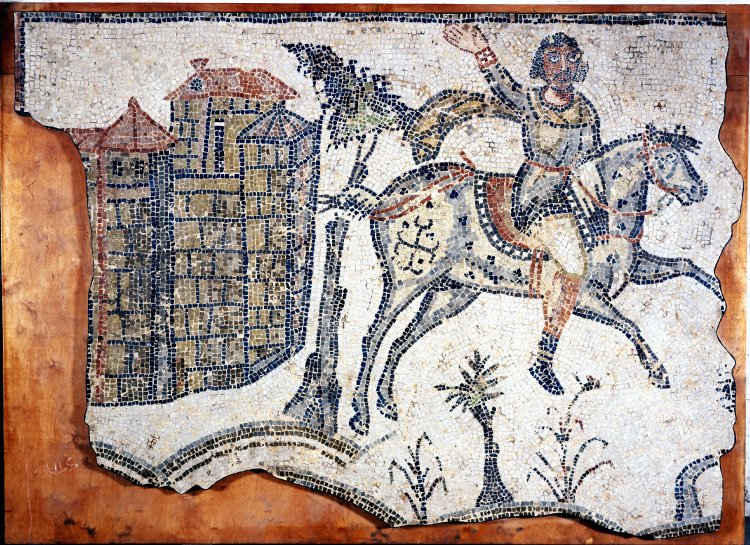
Human nature being what it is, in most countries and cultures crimes of all kinds abound. Though statistics over the last twenty years from the US and UK indicate a general decline in crime overall, such statistics are famously impacted by levels of reporting, policing and investment, and contradicted by the emergence of new types of cyber-crime and vandalism. Across the EU, after a decrease since 2016, murders increased 3.5% in 2020 (with 37% being female victims). Crime statistics reflect the impact of COVID.[1] The number of assaults (609,600) and drug-related crimes, which had been steadily increasing saw a 5% reduction in 2020, while figures for sexual violence remained constant. In England and Wales, police records reveal a return to pre-pandemic levels in the year to March 2022, up 4% on 2021, with 6.3m. crimes (i.e., ca. 80 per 1000 people). Crime statistics from round the world make equally bleak reading. The sickness of societies, communities and individuals is writ large across our world. Many crimes remain unreported or, more tragically, unacknowledged.

My primary focus in this Briefing is prompted by that heinous, intimate, techno- or cyber-crime of ‘Identity theft’. But I don’t want to limit the definition to the cynical and lucrative artifice of invisible fraudsters and techno-gangsters. My interest is in broadening the focus to what might be called, ‘Crimes against Identity’. This is not to compromise popular and legal invocation of dastardly ‘Crimes against Humanity’, but to ensure that individuality in every form is recognized as equally susceptible to violence and abuse, vandalism, and theft. When an individual, community, or society suffer criminal violence and wanton vandalism, it is not just their humanity that is defiled or destroyed, but their identity. For ‘identity’, like property, family, and reputation, can be stolen, raped, vandalized, and destroyed. Vandals are not the only petty criminals who pilfer, scratch and daub: we see and do it every day.
Before we look at crime, a word on the history and etymology of ‘vandals’ and ‘vandalism’. This is for more than mere historical interest: as so often, history hides important lessons.

The Vandals were a North and Central European tribe (perhaps a Germanic people),[2] who harried the Western Roman Empire in the 5th century.[3] The early history of the Vandals is disputed. Most scholars link the Vandals to the 3rd century (or Iron Age) Przeworsk culture and Lugii tribe in (modern) southern Poland. Circa 120 BCE, it seems, they settled in Silesia. During the ‘Marcomannic Wars’ (ca. 166-180 CE; Lat. Bellum Germanicum et Sarmaticum) – between the Romans under Emperor Marcus Aurelius (121-180; r. 161-180) and Germanic Quadi and Marcomanni tribes and Central Asian Sarmatian lazyges – the Vandals spread to Dacia and central European Roman Province of Pannonia. They settled there for more than a century. With permission from Emperor Constantine the Great (ca. 272-337: r. 306-337) and close monitoring by the Goths, the Vandals remained in Pannonia until ca.400 when they (and other Germanic tribes) were forced West by the Huns. They fled first to Gaul and then across the Pyrenees into the Iberian Peninsula. In 418 they were driven south by the Visigoths (under orders from Rome) first from (northern) Galicia to (central) Baetica and then from 429, under the Hasdingian (and then later also Alani) kings Gunderic (379-428; r. 407-428) and Gaiseric or Genseric (ca. 389-477; r. 428-477) to the Roman Province of Africa (Lat. Africa Proconsularis) that covered the area of modern Tunisia, NE Algeria and Gulf of Sirte on the western coast of Libya. To-date, ‘Vandal’ designated little more than one among many migrant tribes, whose life and livelihood were largely determined by others.

The fortunes of the Vandals and Alans changed significantly under their gifted political and military leader Gaiseric.[4] By 439 CE a new Vandal kingdom had spread from North Africa to the Mediterranean and Balearic Islands. In 455 Gaiseric’s connection and aspirations led him to enter, sack, and plunder Rome, at the behest (for complex politico-dynastic reasons) of the disgruntled Western Empress Licinia Eudoxia (422-ca.493; r. 437-455), daughter of the Eastern Emperor Theodosius II (401-450; r. 402-450). Unlike the three-day sacking of Rome by Visigoths in 410 – and despite Gaiseric’s explicit assurances to the contrary – the Vandals plundered the city for fourteen days, destroying key buildings, enslaving citizens, and extracting large quantities of gold, silver, jewels, and furniture. A thousand years later, western art and culture represented the Vandals as archetypal ‘barbarians’; hence, modern connotations for ‘vandalism’. Further success followed for Gaiseric. In 460/1, he repulsed the Western Roman Emperor Majoran (ca. 420-461; r. 457-461) and in 468, at the Battle of Cape Bon, he defended his capital city of Carthage against (Western and Eastern) imperial forces under Eastern Roman Emperor Basiliscus (d. 476/7; r. 475-476). In time, the Vandal kingdom faded and failed, and, as a result of the ‘Vandalic Wars’ of 533-534, the Byzantine Emperor Justinian I (482-565; r. 527-565; aka Justinian the Great) recaptured the Roman Province of Africa and subsumed it into the Eastern Roman Empire. Vandal identity was all but lost, but the legacy of their cultural barbarity, and thence their notoriety, remains.
We will return to the Vandals and their legacy later. For now, we return to crime in general and ‘Identity theft’ in particular. Few countries have in recent times avoided an increase in petty crime, and multiplication of gangs engaged in organized crime and turf warfare.[5] The US FBI-UCR (Uniform Crime Report) for 2019 recorded 10,085,207 arrests for violent and property crimes; while the FBI’s Human Trafficking data collection has, since it started in 2013, seen a steady increase in incidents across the USA and its overseas territories (incl. Guam, Virgin Islands and Puerto Rico). To put this in context, the Organized Crime Index (OCI) list of countries with the highest rates of homicide, rape, and robbery (per 100,000) has Venezuela (83.76), Papua New Guinea (80.79) and South Africa (76.86) at the top.[6] But at the start of its 2021 report, ‘The Global Organized Crime Index’, GI-TOC (Global Initiative against Transnational Organized Crime), said of organized crime:

Organized crime is a scourge that afflicts countries in every corner of the globe, from tiny island states to large economic superpowers, and is an underlying driver of many major geopolitical challenges including conflict, political instability and forced migration … Because of its clandestine nature … often little is known about how organized crime operates in each country.
In other words, the world not only suffers from petty crime and domestic violence: there is presently a global pandemic of organized crime with no effective antidote. As an expression of this, the GI-TOC report highlights the ‘adaptability of organized crime’ during the COVID pandemic, exploiting vulnerability and fear in depressingly effective and lucrative ways. UK Finance concurs: ‘Criminals used the Covid-19 pandemic to target victims online, through impersonation scams, romance fraud and investment scams.’ Adding in a recent statement, ‘In 2020, Authorised Push Payment (APP) fraud losses amounted to £479 million, up five per cent on the previous year.’ Of course, all crime offends the law-abiding. But theft of a person’s ‘identity’ is, to my mind, more widespread and abhorrent than even the statistics that surround it. As a recent US report states: ‘Most people may think that identity theft is rare. … the data shows the contrary. Identity theft happens both more often, and in more ways, than most people presume’ (finmasters.com/identity-theft-statistics [2022]).[7] As the UK Court of Appeal ruled in 2005: ‘Identity fraud is a particularly pernicious and prevalent form of dishonesty calling for, in our judgment, deterrent sentences’ (Mr Justice Henriques in R v. Seward [2005] EWCA Crim 1941, para 14).

‘Identity theft’ first appears in the Oxford English Dictionary in 1964. Technically, it is the theft of ‘personally identifiable’ information – such as your name, date of birth, driving license number, bank and credit card data, medical, social and passport information, and associated PINs, fingerprints and passwords – in order to secure your money, benefits, credit rating and social profile. ‘Identity theft’ often remains hidden. It is estimated only 2% of data breaches of government information results in ‘identity fraud’. Financial benefit is not the only consequence of ID theft. The US ‘Identity Theft Resource Center’ also includes ‘criminal identity theft’ (citing another person when accused of a crime), ‘identity cloning’ (to masquerade as someone else), ‘medical identity theft’ (to secure another person’s drugs or medical benefits) and ‘child identity theft’ (when a child’s data is used as the basis for a whole new life). So, our privacy is invaded invisibly and deliberately by posers and garbage pickers, hackers and scammers, nerds, skimmers, fraudsters and con men. It seems inventiveness in this area knows no bounds. If statistics on fraud against the vulnerable during the COVID pandemic aren’t sickening enough, then what of increasing incidents of ‘child ID theft’, which a 2016 study suggested already impacted more than 10% of US children.[8] And then there is the politically toxic issue of voter fraud and rigged elections, with data captured, twisted, multiplied and mis-read according to the wit and will of pollsters, politicians and gangster ‘Heads of State’ … or so some would claim.[9]

However formed, framed or engineered, ID theft represents an invasion of an individual’s privacy, an appropriation of their property (however defined) and willful redirection of their data, choices and resources. As a friend said of a recent burglary, ‘I felt as if my life and home had been invaded and soiled.’ People traffickers and the masterminds behind organized crime aren’t just heartless perpetrators of atrocity and misery, they commit ‘Crimes against Identity’. They take lives and use them. And, by increasing the scale and scope of criminality, they desensitize us all to the plight and pain of individuals. National politics and/or international geopolitics that lose touch with individuality are complicit. ID theft need not be deliberately perpetrated by criminals, it can be accidentally permitted by unwitting bystanders … like you and me.

(Frank Schwichtenberg – Own Work)
As indicated previously, the history of the Vandals casts light on the present-day pandemic of ‘Crimes against Identity’. Four themes from their history and experience stand out.
First, the Vandals are themselves victims of a kind of ID theft: their very name, after all, has become a byword for wanton destruction and cultural barbarism. But is that really who and what they were? Despite the criticisms of contemporary sources (e.g., Victor of Vita, Quodvultdeus and Fulgentius of Ruspe),[10] historians of Late Antiquity and the Early Middle Ages are now more inclined to see the Vandals in the Province of Africa as preservers of Roman culture than its destroyers.[11] The chronicler Prosper of Aquitaine (ca. 390-ca.455) even has Pope Leo the Great cordially negotiating with Gaiseric on 2 June 455 about the extent and nature of his destruction of Rome. Few doubt what followed was less an act of mindless destruction and more a demonstration of Vandal supremacy over an ailing Roman Empire, with Western Emperor Valentinian III (419-455; r. 425-455) having earlier offered the hand of his daughter Eudocia (422-ca.493) in marriage to Gaiseric’s son, the first self-proclaimed, but essentially unimpressive, King of the Vandals, Huneric (d. 484; r. 477-484). The willful re-writing of cultural and political history that turns the Vandals into vandals, is not, of course, uncommon. ID theft and social ‘character assassination’ bestride history and blight many nations. So, ‘Jews’, ‘Poles’, ‘Irish’, ‘Indian’, ‘Immigrant’ and ‘Pakistani’ (and too many others) become names to pigeon-hole and put down, mock and isolate, their identity a plaything and projection of a mindless majority or racist few. But whatever the cause, the tragic consequence is the same, a crime against their historic, true, or aspirant identity.

The history of the Vandals has another lesson. There is much disagreement among scholars about the source and original meaning of the name ‘Vandal’. The word appears in various forms in early European languages and literature, i.e., Wend[e]las in Old English, Vendill in Old Norse, and Wandali and Wendilensis in the writings of the influential Danish historian and theologian Saxo Grammaticus (ca. 1150-1220), all of which may possibly derive from the (proto-)Germanic Wanđilaz. But there the trail of meaning descends into the mud and mire of guess and conjecture, with some linking the root wand- (or wend-) to twisting and turning, water, wind, and worship of, or descent from, the Germanic mythological figure Aurvandil (Lit. the divine twins). And then there’s the possible geographic connection via the words wentilsēo (Old German) and wendelsǣ (Old English) to the ‘Vandal-sea’ (an old name for the Mediterranean) or Vendel an eastern part of ancient Sweden. It is all very odd, old and elusive. It is also all a good, clear, contemporary reminder that ‘identity’ is always more profound and complex than simplistic caricatures and snide remarks. Though on a legal, financial, or administrative level ‘ID theft’ has become frighteningly easy, at a deeper level our ‘identity’ is elusive, very often even to ourselves. ‘Crimes against Identity’ may be committed by others: they may also be self-inflicted when we fail to find or recall who we really are. As the etymology of ‘Vandal’ remind us, there are many twists and turns in our identity and in the true identity of others.

There’s a third lesson from the Vandals. As we have seen already, though often the victims, the Vandals were also perpetrators of ‘Crimes against Identity’. In their 5th century sacking of Rome, and in their earlier conflict in Germania and subsequent destruction of Dacia in the 2nd and 3rd centuries, the Vandals (viz. Lugii, Silingi, Hasdingi, Alans and possibly the Lacringi) were a disruptive, warrior people, who suffered much over the centuries at the hands of powerful enemies.[12] As so often in life and history, victims become victimizers, hurt people hurt others. Vandal history is a stark reminder of the cycles of social, cultural, political, and physical abuse that plague our world today. ‘Crimes against Identity’ are all too often perpetrated by those who have experienced similar treatment. This doesn’t, of course, condone the crimes or exonerate the criminals, but it should be a wake-up call to the law-abiding to avoid perpetuating the causes and consequences of another’s crime. It can take centuries for cycles of violence to fade and fail … like the Vandal kingdom.

Lastly, the history of the Vandals has a strangely contemporary ring to it. It tells of conflict in Central Europe, of an imperial power imposing its identity on a smaller people, of an embattled tribe driven North, South and West as migrants, of ‘ID theft’ on a national scale. Among President Putin’s (b. 1953; Pres. 2000-2008, 2012-present) many crimes is, surely, his ‘Crime against Ukrainian Identity’. Not that Ukrainian identity is any clearer than that of the Vandals, but that geopolitical vandalism is never going to make for a peaceful world. Russia’s ideological ‘Identity theft’ of individuals inside and outside its borders, politicizes organized crime and accelerates the cycle of violence that commonsense and common humanity can and should never sanction. Courts will one day address the ‘Crimes against Humanity’ committed by Putin and his forces in Ukraine. In the interim, people of good will can and should keep an ever-closer eye on the proliferation of ‘Crimes against Identity’ that are consciously and unconsciously committed at home and abroad, lest crime statistics make for bleaker reading going forward and (we ourselves) add to the cycle of violence and abuse.
Christopher Hancock – Director
[1] On this, see https://www.ukfinance.org.uk/press/press-releases/criminals-exploit-covid-19-pandemic-rise-scams-targeting-victims-online; accessed 11 October 2022.
[2] The well-connected Roman historian, philosopher, and naval commander Pliny the Elder (ca.23-79 CE) provides one of the earliest references to the Vandals or Vandili as a Germanic tribe (along with the Burgundiones, Varini, Carini and Gutones). The Roman historian Tacitus (ca.56-ca.120) similarly lists them (with the Marsi, Gambrivii and Suebi) as an old Germanic people found between the Oder and Vistula rivers.
[3] N.B. from 286 to 476, the Roman Empire was governed by two co-equal and independent imperial courts. One Caesar oversaw provinces in the West, the other the East. Though historians speak of a ‘Western’ and ‘Eastern’ Empire this does not reflect contemporary opinion, which saw Empire as essentially one. In 476, the Roman army was defeated at the Battle of Ravenna by barbarian forces under Odoacer (ca. 433-493). This led to the ousting of child Emperor Romulus Augustulus (ca. 465-ca.511; r. 475-6) and end to the two-part imperial Roman structure.
[4] Gaiseric’s long, itinerant, military life began on the shores of Lake Balaton (Lat. Lacus Pelsodis or Pelso) in the Transdanubian region of (modern) Hungary and ended in Carthage. Jordanes, a 6th century Roman bureaucrat, says this of him: ‘Gaiseric…was a man of moderate height and lame in consequence of a fall from his horse. He was a man of deep thought and few words, holding luxury in disdain, furious in his anger, greedy for gain, shrewd in winning over the barbarians and skilled in sowing the seeds of dissension to arouse enmity.’
[5] On arson and criminal damage in England and Wales, see https://www.statista.com/statistics/315523/criminal-damage-in-england-and-wales; accessed 11 October 2022.
[6] See further: https://ocindex.net/rankings; accessed 11 October 2022.
[7] Statistics from this 2021 US report are illuminating, and probably broadly representative. During the period under review, 1,434,698 Americans reported ID theft, ID fraud damages reached $43 bn, 27% of all ID theft cases during the COVID pandemic involved Government Documents or Benefits Fraud and people aged 30-39 were most often victims of ID theft. Furthermore, 51% of victims had an annual income of $75,000+, 71% were Caucasian and 21% reported they had lost $20,000+. Rhode Island recorded the highest incidents of ID theft.
[8] Cf. Richard Power of the Carnegie Mellon Cylab found 10.2% of 40,000 children were victims of ID theft.
[9] Some readers may find this helpful: https://www.brennancenter.org/issues/ensure-every-american-can-vote/vote-suppression/myth-voter-fraud; accessed 11 October 2022.
[10] Cf. the North African Bishop Victor of Vita (b. ca. 430), the Carthaginian deacon Quodvultdeus (d. 454), who corresponded with the philosopher-theologian [St.] Augustine (354-430) and [St.] Fulgentius (460-533), Bishop of Ruspe in modern-day Tunisia.
[11] Cf. F. M. Clover and R. S. Humphreys (eds), Tradition and Innovation in Late Antiquity (1989).
[12] N.B., some evidence suggests Germanic Vandals (aka Silingi), defeated in Gaul by Emperor Probus (230/5-282; r. 276-282) in 278, were deported to Britannia and settled in the ancient Roman city Silchester.
